PUDONG, CHINA - The closest most foreigners get to this futuristic city, whose skyline looks like it jumped off the pages of a sci-fi comic book, is from the observation boardwalk on the Shanghai side of the Huangpu River.
Visitors are fascinated by the jungle of glass and concrete towers that sit across the river in an area designated as a “special economic zone” by the Chinese government. Buildings come in every geometric shape imaginable and stretch to dizzying heights — many Pudong skyscrapers exceed 100 storeys.
The tourists snap photographs of Pudong’s iconic Oriental Pearl Tower, the communications marvel shaped like a Christmas tree ornament that first brought worldwide attention to this architectural wonderland when it opened in 1994.
But because Pudong is void of the charming colonial neighbourhoods that make Shanghai such a joy to tour, few tourists feel the need to cross the river and explore the modern wonder that only 15 years ago was farmland.
They don’t know what they’re missing.
Enticed by the prospect of “walking” under the Huangpu River through a 647-metre-long pedestrian tunnel, I decide to visit Pudong one sunny autumn morning. However, as I discover, you don’t really “walk” in the tunnel, you hop on an airport-style people mover and are entertained with blinking lights and lots of historic photos as you’re pulled along.
Children seem to enjoy the experience more than I do, which is why I make the return voyage to Shanghai aboard a ferry that costs just two yuan (about 25 cents). The tunnel experience costs 45 yuan (about $7.50 Cdn.)
I emerge from the tunnel at the foot of the Pearl Tower, which is the third tallest in the world and one of China’s most photographed landmarks. A small park fans out from the base of the tower and leads to a riverside promenade offering some spectacular views of Shanghai’s historic Bund — the avenue lined with colonial office buildings that Pudong replaced as China’s capital of finance.
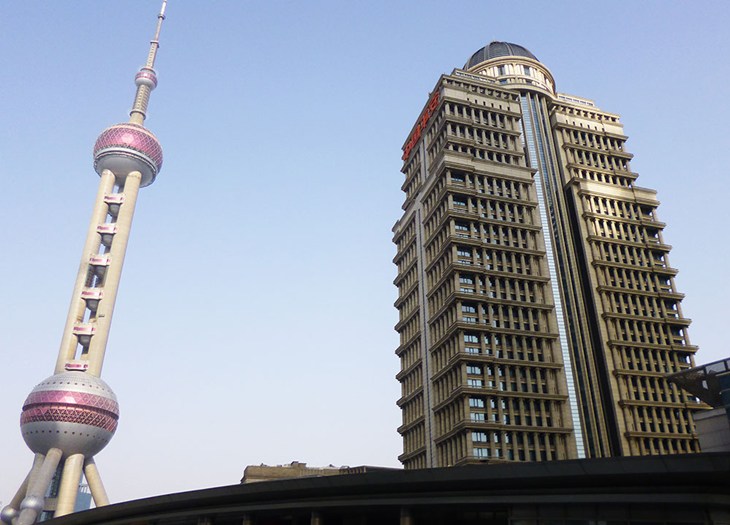
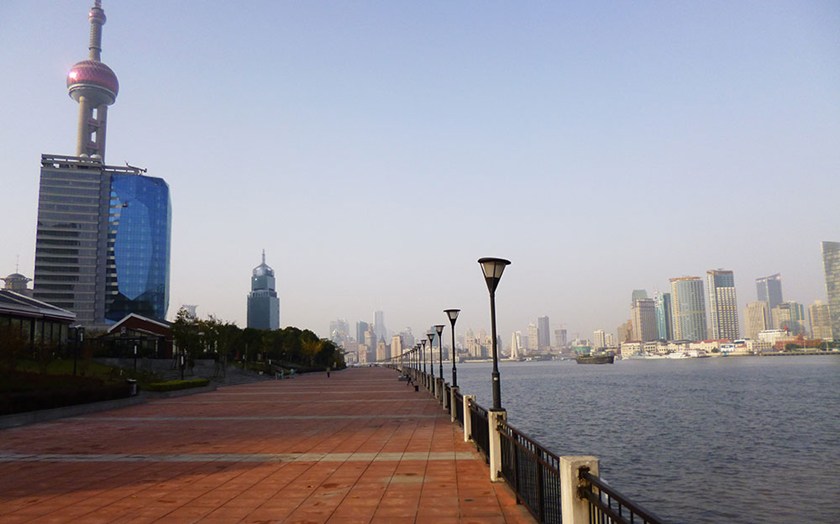
Above: The Oriental Pearl Tower is the communications landmark that defines Pudong.
Joggers and some elderly women practising tai chi join me on the promenade lined with flower beds, restaurants and cafes —this is where the ferry dock is also located. With the rising sun bouncing off the glass towers, turning Pudong into a giant crystal chandelier, I begin my tour by walking through a small park and onto Lujiazui Ring Road where the entrance to the Pearl Tower is located.
On one side of the street, office workers are hurrying to their jobs while on the other guards are readying the grounds of the Pearl Tower and neighbouring Shanghai Aquarium for another busy day — both are very popular with domestic tourists.
I follow Lujiazui until it drifts into Century Avenue, Pudong’s main thoroughfare. The busy street that’s always clogged with cars and trucks is a tourist attraction in itself. Designed by the French, Century Avenue features eight botanical gardens containing more than 80,000 plants and flowers and instead of sidewalks, designers built a system of overhead walkways that take pedestrians to a multitude of office towers and shopping malls without ever having to cross the busy street.
From the overhead walkway I get the best views of the skyscrapers and Pearl Tower and can see more of the architectural details each building offers. While most buildings stand pencil straight, some lean and others curve and others even have holes and squares cut into them. There are more than 20,000 high-rise buildings in Pudong that stand 11 storeys or higher and 1,000 of those exceed 30 storeys.
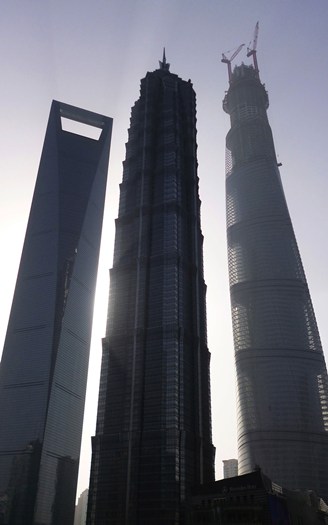
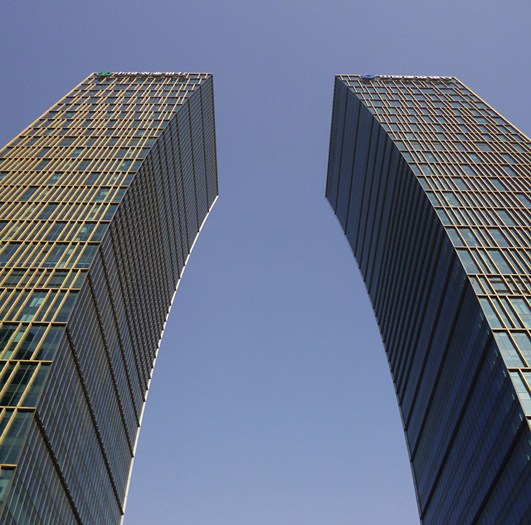
Above: Some of the world's most beautiful architecture now towers over Pudong.
Just north of the river I see a giant structure being outfitted with its glass skin. A sign identifies the impressive edifice as the Shanghai Tower, which, when completed, will be the second tallest in the world next to Dubai’s Burj Khalifa.
Shanghai Tower’s spiral design is what impresses most and I’m not surprised to read later it’s already earned several architectural awards. When topped off, the Tower will stand 632 metres -— 121 storeys in total.
The Tower is stands next to two other impressive skyscrapers that have also earned high architectural praise — the Shanghai World Financial Centre (WFC) and Jin Mao Tower.
The WFC rises 100 storeys (492 metres) into the sky and is home to the ultra-luxurious 174 room Park Hyatt Hotel, which holds the distinction of being the second highest hotel in the world. The world’s highest hotel, Grand Hyatt, is located in the WFC’s neighbour, the Jin Mao Tower, whose 88 storey postmodern design draws heavily on traditional Chinese architecture in its shape — a tiered pagoda.
While they may stand on the Pudong side of the Huangpu River, most of the buildings are christened with “Shanghai” in their names (we must admit that “Shanghai Tower” sounds better than “Pudong Tower.”)
Other buildings that are eye candy for architectural buffs like me are the 60-storey Shimao International Plaza, whose upper 48 floors are home to the 770-room Le Royal Meridien Hotel, and the Shanghai Wheelock Square, which features a large shopping arcade.
Most of the skyscrapers, in fact, feature shopping plazas at their base and the occupants are the Who’s Who of the upscale fashion world — Gucci, Prada, Hermes, Valentino, Tom Ford and Chanel, just to name drop a few.
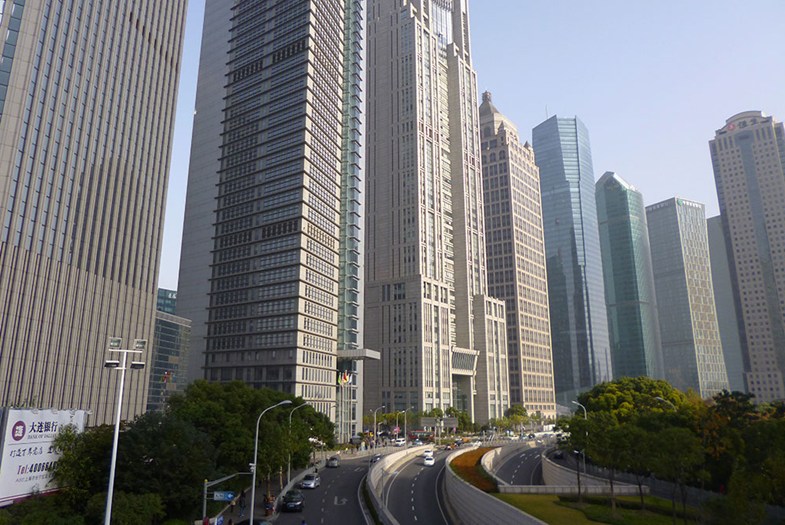
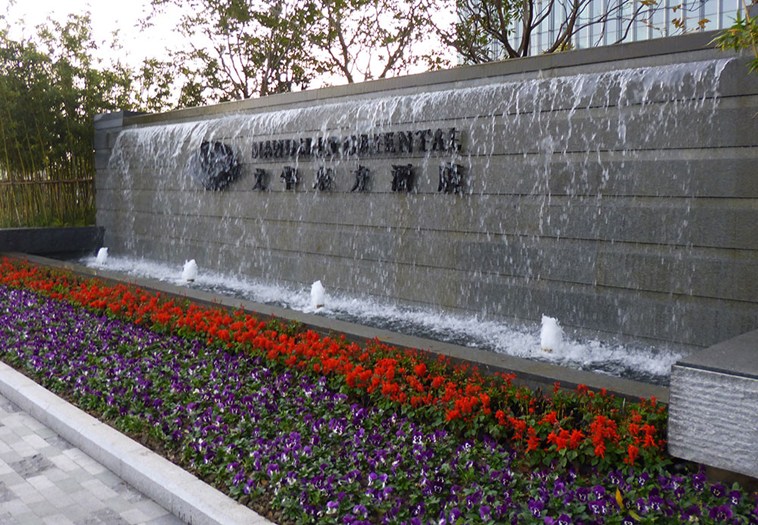
Above: Pudong offers a variety of 5-star hotels, including the palatial Mandarin Oriental property, right.
But it’s really the 1.3 million square metres of prime office space that lure companies to China’s new economic capital. Pudong is also where Shanghai’s international airport is located, a massive complex that handles about 50 million passengers a year.
In 2016, Disney will open a new theme park in Pudong, near the site of the 2010 World Expo, which was unquestionably the biggest and best world’s fair ever held. Some of the impressive buildings that were featured at Expo remain open to tourists.
At the end of my tour, I take a high speed elevator to the top of the Shanghai IFC building where the amazing new Ritz-Carlton Hotel is located. From the hotel’s outdoor terrace, I get a bird’s-eye view of Shanghai, the Bund and the Huangpu, which in the late afternoon is crowded with slow-moving barges filled with coal.
It’s a beautiful view but the only problem is, from this vantage point, I can’t see the towering wonders of Pudong.
About the Author
Marc Atchison is a veteran journalist and a seasoned traveller with more than 20 years of travel writing experience. As the former Travel Editor of the Toronto Star, Canada's largest newspaper, and now Editor-in-Chief and Senior Writer for TraveLife magazine (Canada) and travelife.ca, Marc has been to over 100 countries in the world. Japan is one of his favorite destinations and he's been there on numerous occasions.